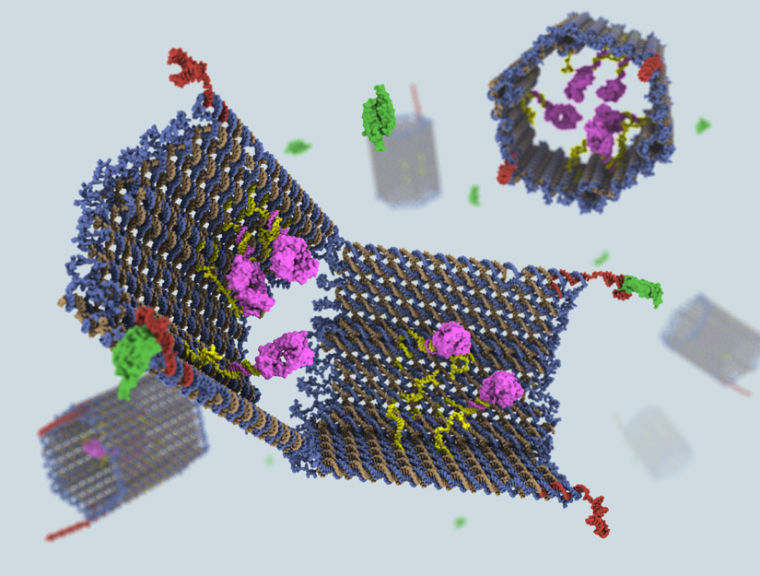New nano-robots made from DNA can transport a precise deadly cargo to unhealthy cells.
The tiny robots bring closer the long-held nanotech dream of a fleet of small robots that can storm the body and kill diseased cells one by one.
"People already know about using antibodies to kill cells," said Shawn Douglas, a technology fellow at Harvard Medical School's Wyss Institute, which develops bio-inspired medical materials and devices. "The selective targeting and exposing the payload, that's the big novel thing."
Douglas and genetics research fellow Ido Bachelet made the new DNA nano-robots at Harvard with genetics professor George M. Church, known for helping to launch the Human Genome Project. Their research will appear in a forthcoming issue of the journal Science.
First, Bachelet and Douglas wondered if they could combine their respective expertise in immunology and building nanostructures to design a robot that would mimic the body's immune system. It would recognize infected cells and push their self-destruct buttons.
WATCH VIDEO: Nanotechnology promises to make our lives better.
Previous breakthroughs included a nanoscale cube with a lid debuted in 2009 that self-assembled in a process called "DNA origami." Adding DNA strands caused the box to open. But Douglas felt that making the box so it got delivered to the right cells would be too difficult. So would making the mechanisms to enter and reprogram the bad cells.
Then Bachelet suggested that they didn't have to reprogram anything. They just had to make a structure that could deliver the right antibodies to a cell's surface with a clear message: stop dividing.
"We could actually make an open-ended container and then all it would need to do is just turn itself inside out," Douglas said.
Their nano-robot is constructed from DNA in a clam shell shape held shut with a special DNA lock. That lock is designed to recognize certain kinds of cancer cells. When it encounters one, the robot springs open and exposes the antibody payload.
So, in the fight against cancer, these nano-robots could be the equivalent of sending SEAL Team Six.
"Our ability to perform that 'surgical strike' with nanoscale devices will ultimately allow us to do so in a way that's safe for the patient," Douglas said.
In the lab, their nano-robot successfully blew up lymphoma and leukemia cells, leaving good cells alone. Doing one of these reactions typically requires 100 billion copies of the robot. In order to start testing their creation on animals, the Harvard postdocs will have to figure out how to scale up to trillions.
Although the nano-robot works in a Petri dish, it will have to be redesigned for a trip through the bloodstream, Douglas said. Modifications are necessary to prevent the particle from getting cleared out by the kidneys or the liver before it has a chance to perform.
"My dream is for one of these devices to ultimately go through clinical trials and become an actual therapeutic that would be a novel treatment for some type of cancer," Douglas said.
Kurt Gothelf is a professor of chemistry at Aarhus University in Denmark, and the director of the Danish National Research Foundation's Center for DNA Nanotechnology. He and his colleagues made the self-assembling nanoscale DNA box with a lid in 2009.
"This is one of the things the field has needed, something to show that, hey, this can actually be useful" Gothelf said of the Harvard group's DNA nano-robot. Although their smart nanodevice isn't curing cancer yet, it does mark an important step along the way, he added.
"People have been talking a lot about robots that enter your body, and go to a place where something is wrong and fix it," Gothelf said. "This is the first example that this might come true one day."
